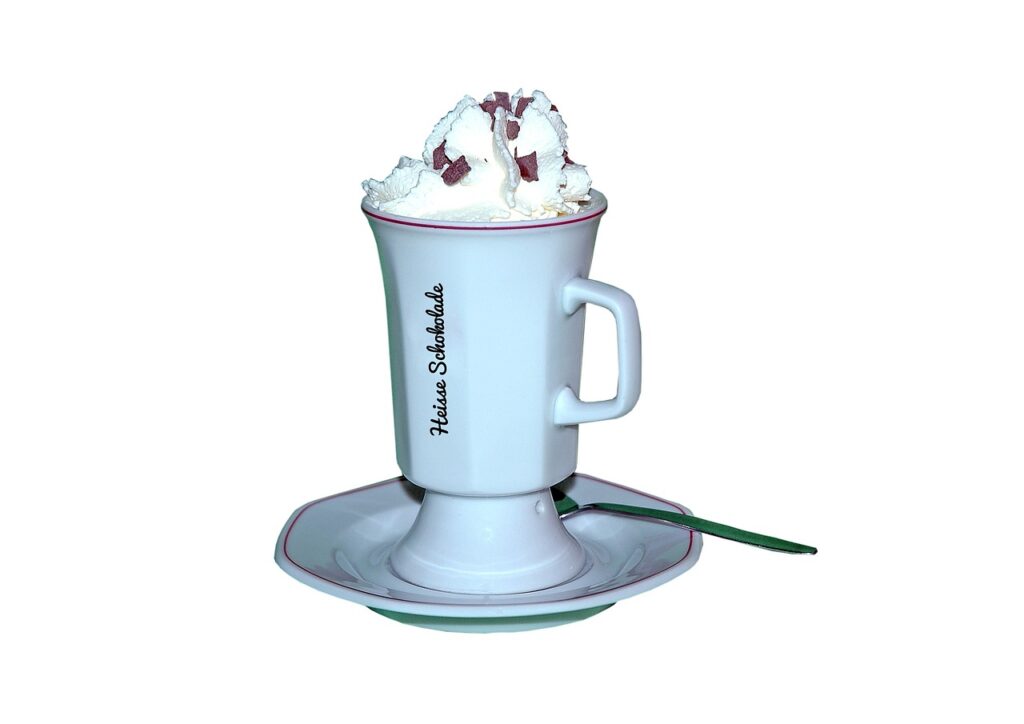Are you ready for a cozy, fun running experience that pairs fitness with a delicious reward at the finish line?
Hot Chocolate Run
This event blends the joy of running with a seasonal treat, often culminating in mugs of hot chocolate and sweet post-race goodies. You’ll find that whether you’re chasing a personal best or aiming for a family-friendly outing, the Hot Chocolate Run offers something for everyone.
What is the Hot Chocolate Run?
The Hot Chocolate Run is a themed road or trail running event that combines standard race distances with a fun, food-focused finish line. You’ll typically get a race bib, a finisher medal, and complimentary hot chocolate and desserts at the finish, making it as much a celebration as a race.
History and concept
The concept began as a way to make winter running more inviting and festive by pairing activity with comfort food. You’ll encounter an atmosphere designed to be warm and social, with runners often wearing themed gear, costumes, and brightly colored winter layers.
Typical distances and event formats
Events commonly feature multiple distance options to suit different abilities and interests, from short family fun runs to more competitive longer distances. You’ll often see 5K, 10K, and 15K, and some organizers add kids’ races, relay options, or stroller-friendly waves.
| Distance | Typical Participants | What to Expect |
|---|---|---|
| 1-mile / Kids Fun Run | Families with young children | Short course, no timing pressure, medal or ribbon, small cups of hot chocolate |
| 5K | Beginner and recreational runners | Single-loop or out-and-back, timed wave starts, post-race treats |
| 10K | Intermediate runners | More pacing strategy needed, may include rolling hills |
| 15K | Competitive and experienced runners | Longer course, more endurance required, often larger finisher rewards |
| Relay / Team Options | Groups and corporate teams | Split distances, teamwork emphasis, group awards |
You’ll find this mix helps the event attract diverse participants and encourages friends and families to attend together.
Hot Chocolate Run 2025 — what’s new?
hot chocolate run 2025 often brings refreshed course designs, updated finisher perks, and new partnerships with local charities or vendors. You’ll want to check the official event page for confirmed dates, new swag, or any route changes specific to the 2025 edition.

Benefits of Participating
Taking part in a themed race provides more than just exercise; you’ll get physical, social, and emotional benefits. The seasonal nature of the event can also motivate people to train through colder months.
Health and fitness benefits
You’ll gain cardiovascular improvements, increased stamina, and stronger muscles by training for any of the race distances. Consistent training leading up to the event will also help your mood, sleep quality, and resilience against stress.
Social and community benefits
The event fosters community by bringing together local runners, volunteers, and vendors in a festive environment. You’ll make new friends, reunite with running partners, and support small businesses and charities that often participate.
Charity and fundraising aspects
Many Hot Chocolate Runs partner with charities, using registration fees and fundraising to benefit community organizations. You’ll have opportunities to create personal fundraising pages, join team fundraising challenges, or contribute at packet pickup.
How to prepare
Proper preparation will make your race more enjoyable and reduce injury risk. You’ll want to combine consistent running with strength work, nutrition planning, and smart rest.
Training plan options
Your training plan should reflect your chosen distance and your current fitness level. Below are two sample 8-week plans — one for the 5K and one for the 15K — that walk you through progressive buildup and recovery.
5K Training Plan (8 weeks)
| Week | Mon | Tue | Wed | Thu | Fri | Sat | Sun |
|---|---|---|---|---|---|---|---|
| 1 | Rest | 2 mi easy | Cross-train 30 min | 2 mi intervals (4x400m) | Rest | 2 mi easy | 3 mi long |
| 2 | Rest | 2.5 mi easy | Cross-train 30 min | 2.5 mi tempo | Rest | 2 mi easy | 3.5 mi long |
| 3 | Rest | 3 mi easy | Strength 20 min | 3 mi intervals (5x400m) | Rest | 2 mi easy | 4 mi long |
| 4 | Rest | 3 mi easy | Cross-train 30 min | 3 mi tempo | Rest | 2 mi easy | 4.5 mi long |
| 5 | Rest | 3.5 mi easy | Strength 20 min | 3 mi intervals (6x400m) | Rest | 2.5 mi easy | 5 mi long |
| 6 | Rest | 3.5 mi easy | Cross-train 30 min | 3.5 mi tempo | Rest | 2.5 mi easy | 5.5 mi long |
| 7 | Rest | 2.5 mi easy | Strength 15 min | 2 mi intervals (4x400m) | Rest | 2 mi easy | 3 mi long |
| 8 | Rest | 2 mi easy | Cross-train 20 min | 2 mi easy | Rest | Easy shakeout 1-1.5 mi | Race day 3.1 mi |
15K Training Plan (8 weeks)
| Week | Mon | Tue | Wed | Thu | Fri | Sat | Sun |
|---|---|---|---|---|---|---|---|
| 1 | Rest | 4 mi easy | Cross-train 40 min | 4 mi tempo | Rest | 3 mi easy | 6 mi long |
| 2 | Rest | 5 mi easy | Strength 25 min | 4 mi intervals (6x400m) | Rest | 3 mi easy | 8 mi long |
| 3 | Rest | 5 mi easy | Cross-train 40 min | 5 mi tempo | Rest | 3 mi easy | 9 mi long |
| 4 | Rest | 6 mi easy | Strength 30 min | 5 mi intervals (5x800m) | Rest | 4 mi easy | 10 mi long |
| 5 | Rest | 6 mi easy | Cross-train 40 min | 6 mi tempo | Rest | 4 mi easy | 11 mi long |
| 6 | Rest | 6 mi easy | Strength 30 min | 6 mi intervals (6x800m) | Rest | 4 mi easy | 12 mi long |
| 7 | Rest | 5 mi easy | Cross-train 30 min | 4 mi tempo | Rest | 3 mi easy | 8 mi long |
| 8 | Rest | 4 mi easy | Strength 20 min | 3 mi easy | Rest | Easy shakeout 2-3 mi | Race day 9.3 mi (15K) |
You’ll notice both plans include recovery days, cross-training, and a gradual increase in long-run mileage to build endurance without overtraining.
Cross-training and strength
Cross-training helps you maintain cardiovascular fitness while reducing impact stress on joints. You’ll benefit from cycling, swimming, or elliptical work, and you should add strength sessions twice weekly focusing on core, glutes, hamstrings, and stability.
Nutrition and hydration leading up to the race
Your training nutrition should emphasize balanced meals with carbohydrates for fuel, protein for muscle repair, and healthy fats for long-term energy. You’ll also want to prioritize hydration, aiming for consistent fluid intake throughout training rather than overdrinking only on race day.
Taper and race-week routine
Tapering reduces volume but keeps intensity for the week before the race so your legs feel fresh. You’ll cut back mileage by 30–50% during the last week, maintain short bursts of tempo or strides, and keep sleep and hydration consistent.

Race-day logistics
On race day, organization lets you focus on performance and enjoyment. You’ll need to know packet pickup, timing, wave starts, and post-race provisions.
Registration and packet pickup
Most events offer in-person packet pickup the day before and race-morning pickup with limited availability. You’ll bring ID, your confirmation email, and any required waivers, and you may get a goody bag, bib, timing chip, and a coupon or wristband for hot chocolate.
What to bring
Packing the right items means a lower-stress race morning and a smoother post-race experience. You’ll want to bring a race-day checklist to ensure nothing vital is forgotten.
Race-Day Checklist
| Category | Items |
|---|---|
| Essentials | Race bib and safety pins, timing chip, photo ID, confirmation |
| Clothing | Race outfit, extra layers, gloves, hat, warm socks |
| Footwear | Race shoes, old shoes or flip-flops for post-race |
| Nutrition | Pre-race snack (banana, toast), gels or chews if used, electrolyte drink |
| Recovery | Warm blanket or jacket, foil blanket, dry socks, small towel |
| Extras | Phone, cash/card, sunscreen, lip balm, hand warmers |
You’ll appreciate having this simple checklist to reduce last-minute stress and ensure a comfortable finish.
Gear and clothing
Dress in layers that you can remove before the start and stash or discard if necessary. You’ll want moisture-wicking fabrics, a wind layer if needed, and an insulated jacket for after the race; bring a hat and gloves for warmth on cold mornings.
Pacing and race strategy
Have a clear pacing plan informed by your training and target pace. You’ll start slightly conservative to avoid early burnout, maintain consistent splits during the middle section, and aim for a controlled effort in the final miles to finish strong.
Handling cold weather and course conditions
Cold weather requires extra attention to warm-up, clothing choices, and post-race recovery. You’ll do dynamic warm-ups to increase blood flow, use hand warmers, and change into dry clothes quickly after the finish to prevent hypothermia or chills.
Post-race and recovery
Recovery is key to maximizing benefits and reducing soreness. You’ll want to focus on refueling, gentle movement, and mobility work right after the race.
Recovering your body
Start with a cool-down walk or easy jog to flush metabolic byproducts from your legs. You’ll follow that with post-race nutrition — a carbohydrate-protein mix within 30–60 minutes — and then use foam rolling or light stretching to ease muscle tension.
Celebrating and enjoying the chocolate
The hot chocolate and dessert station is the hallmark of the event and a fun reward for your effort. You’ll use moderation — the hot chocolate adds comfort and calories, so balance it with your refuel plan depending on your goals.

For families and kids
The event is often family-focused, with programming that appeals to children and parents alike. You’ll find kid-specific races, family discounts, and interactive booths that keep younger participants entertained.
Kids’ fun runs and family options
Kids’ races are typically short, safe, and medal-based to create a sense of accomplishment. You’ll find that events often include family wave starts, stroller policies, and parent-child team opportunities that make participation straightforward.
Safety and warming stations
Family-friendly events include warming tents, blankets, and first-aid stations to protect children from cold-related issues. You’ll also rely on event staff for child-friendly restroom access, lost-child protocols, and easily reachable medical support.
Volunteering and spectating
Volunteers power the event, and spectators help create an energetic atmosphere on the course. You’ll be rewarded with a meaningful role or a chance to cheer on friends and family through the finish chute.
Volunteer roles and responsibilities
Common volunteer tasks include packet pickup, course marshaling, water station management, and post-race cleanup. You’ll receive a volunteer briefing that covers safety, communication channels, and hospitality perks like shirts, snacks, or local vendor coupons.
Tips for spectators
As a spectator, identify key course points, bring warm layers, and plan meeting spots for after the race. You’ll love cheering at the last mile where your encouragement can make a real difference in a runner’s finish.

Registration, pricing, and fundraising tips
Registration windows and pricing fluctuate based on demand, location, and included perks. You’ll often get early-bird pricing if you sign up early and may find fundraising entries if you want to support a charity.
| Item | Typical Cost Range | What’s Usually Included |
|---|---|---|
| Early-bird 5K | $25–$40 | Bib, timing, medal, hot chocolate cup |
| Regular 5K | $35–$55 | Same as above with possible additional swag |
| 10K / 15K | $40–$75 | Bib, timing, finisher medal, larger swag bag |
| Kids’ Race | $10–$25 | Bib, participation medal, small treat |
| VIP / VIP+ | $75–$150 | Priority start, premium swag, dedicated tent |
You’ll note that prices depend on location and what organizers pack into the event.
How to find the right event and register
Search event listings, local running stores, and community calendars to locate the nearest Hot Chocolate Run. You’ll compare course profiles, date convenience, and included perks before registering, and it’s wise to read refund and transfer policies.
Fundraising ideas and incentives
If you plan to fundraise, use social media, themed contests, and local partnerships to boost contributions. You’ll organize bake sales, “sponsor a mile” campaigns, and small business sponsorships to reach your goal, and many events offer incentives like recognition or special gear for top fundraisers.
Safety and health considerations
Safety planning keeps you and other participants healthy throughout the event. You’ll account for weather, cardiac care, and course conditions to have a safe race experience.
Cold-related risks and first aid
Exposure to cold increases the risk of hypothermia and frostbite in extreme cases, so you’ll watch for early warning signs like uncontrollable shivering or numb extremities. Event medical teams are typically positioned along the course and at the finish to manage injuries, dehydration, and cold-related emergencies.
COVID-19 and infectious disease guidance
Organizers may implement health policies like mask recommendations, vaccination guidance, or spacing for packet pickup depending on local conditions. You’ll follow posted protocols and avoid attending if you’re feeling unwell to protect the community.

Race etiquette and sustainability
Your conduct on race day affects fellow participants and the environment. You’ll respect wave starts, yield to faster runners, and follow course marshals’ instructions to keep things safe and enjoyable.
Litter, recycling, and green initiatives
Many events aim to reduce waste by offering recycling stations, compostable cups, and digital results. You’ll help by carrying gels and trash to aid stations and using refillable bottles when possible.
Respect for volunteers and staff
The volunteers give their time to ensure a smooth event, and simple acts of courtesy go a long way. You’ll thank volunteers, follow directions, and be patient during busy packet pickup or post-race lines.
Race-day pacing examples by goal
Having concrete pacing examples helps you visualize what race-day effort looks like for different goals. You’ll use these to align training and expectation.
| Goal | 5K Target Pace | 10K Target Pace | 15K Target Pace |
|---|---|---|---|
| Finish comfortably | 10:00–11:30 /mi | 10:15–11:45 /mi | 10:30–12:00 /mi |
| Improve fitness | 8:30–9:45 /mi | 8:45–9:55 /mi | 9:00–10:15 /mi |
| Competitive time | <7:30 />i | <7:45 />i | <8:00 />i |
You’ll tailor your pacing based on race-day conditions and how you feel during warm-up.
Frequently Asked Questions (FAQs)
The following common questions address practical concerns you may have about the Hot Chocolate Run. Each question includes a concise, helpful response to guide your planning.
How early should I arrive on race morning?
You should aim to arrive 45–90 minutes before your scheduled start time, depending on packet pickup needs and the event’s crowding. This window gives you time to warm up, use restrooms, and find your starting corral without rushing.
Can I transfer my registration to someone else?
Transfer policies vary by event, but many allow transfers for a fee or through formal request channels. You should check the event’s registration page for specific rules and deadlines for transfers.
Are dogs and strollers allowed on the course?
Some events permit strollers in designated family waves and allow dogs only if explicitly stated in the race rules. You should confirm the policy in advance; if dogs are allowed, they should be leashed and well-behaved.
What if it snows or the weather is extreme?
Organizers typically have a weather contingency plan that may include delays, altered start times, route changes, or cancellations. You should monitor event communications and be prepared for wet or icy conditions with appropriate footwear and layers.
Will there be hot chocolate for all participants?
Most Hot Chocolate Runs provide hot chocolate and some dessert items to registered participants, usually included with registration. You should bring a reusable mug if the event encourages sustainability or provides limited cups.
Are pacers available in the race?
Larger events sometimes provide pacers for common goal times, while smaller events may not. You should check the event page or contact organizers to learn whether pacers will be available.
How do I validate parking and transportation?
Parking details and public transit access are usually listed on the event website, including recommended lots and drop-off points. You should arrive early to avoid congestion and consider carpooling or public transit to reduce hassle.
Is there an official race app or live tracking?
Many organizers offer live tracking or apps that let friends and family follow you on race day. You should register for any tracking services provided so spectators can receive updates.
What should I do if I feel unwell during the race?
If you feel faint, dizzy, or experience chest pain, you should slow to a walk and alert the nearest volunteer or medical staff. The event medical team is trained to respond quickly, so stop at a medical tent if you need assistance.
How do refunds and cancellations work?
Refund and cancellation policies vary; many events offer no refunds but allow bib transfers or deferrals for a fee. You should read the registration terms closely before signing up and consider event insurance if available.
How to make the most of hot chocolate run 2025
Plan early, train consistently, and embrace the social aspect of the event to make 2025 memorable. You’ll set realistic goals, involve friends or family, and take advantage of the festive atmosphere to enjoy both the run and the treats.
Planning tips and timeline
Start training at least eight weeks before the event if you’re targeting a timed performance, and register early to lock in lower fees. You’ll also prepare logistics like travel, parking, and post-race meeting spots to reduce race-day stress.
Capturing memories and sharing
Bring a phone or lightweight camera to capture finish-line moments and group photos, but avoid blocking the course for photographers. You’ll share highlights on social media using the event hashtag, and many organizers post official photos for purchase after the race.
Conclusion
Participating in a Hot Chocolate Run blends fitness, social connection, and a festive reward that makes winter running enjoyable. You’ll benefit physically, meet people, and create lasting memories whether you race competitively or come for the warmth and treats.
If you’re planning to join hot chocolate run 2025, register early, follow a sensible training plan, and prioritize safety so you can savor every sip of your well-earned celebration.

